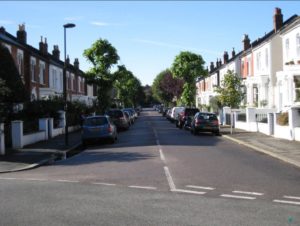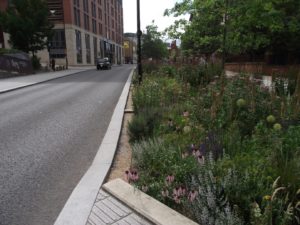Urban drainage – A glimpse of the future
Chris Digman – Technical Director at Stantec
Lockdown – providing a rare insight into future opportunities to manage surface water
Many of the wider challenges and gauntlets that were present at the start of the year still remain, such as tackling the ecological and climate emergencies whilst journeying toward net zero Carbon. In the last few months, we have seen an increase in the potential and ambition to do things differently. If that continues, we should see a cleaner, healthier and better environment for future generations.
The recent effects of, and response to, COVID19 – enduring a period of lockdown and now adapting to changing rules, provide a unique chance to consider the future opportunities to manage surface water. Reflecting on what we have experienced over the last few months, we can consider the emerging drivers that may help the water industry deliver change whilst planning for uncertainty.
During lockdown, roads were empty. Cars remained on the drive. The shift in improving air quality was significant. There was an apparent urge to undertake more exercise. Access to green space and the natural environment took on greater importance. Roll forward 10 years – could this in part be what our future looks like? Electric vehicles by 2030? Autonomous vehicles becoming prevalent? Reduced car ownership and increased use of other forms of transport? Imagine the effect this could have on highway space – far less could be required.

And what could this mean for managing surface water? Firstly, it could offset the forecast increase in severe rainfall events due to climate change by reducing the amount of runoff from hardstanding. This change in function in the urban area could enable the greater use of green infrastructure to manage the runoff from those remaining surfaces. The triple win though comes by providing such green infrastructure that creates far wider benefits to people and the environment – and importantly by supporting people’s mental health and wellbeing.
Thinking about people, since lockdown started, we have seen a change in behaviours where large parts of communities behaved differently. Now, we should not compare the effects and fear created from COVID19 directly to the impact of flooding and pollution. However, we can recognise the real potential to work with communities and believe that they can be part of the solution to do something different on an individual and community level – even related to water. Harnessing the potential of communities should not only relate to change in public spaces creating multiple benefits. Imagine what we might be able to achieve by working with communities and citizens to adapt their properties also – often a difficult area to intervene.

A short-term (which we can hope remains in the long-term) positive outcome of the current tragic circumstances is that we may see a burst of extra ‘green’ investment that could result in an increase in blue green infrastructure to manage surface water. For example, the letter recently sent to the Water Companies by Defra, Environment Agency and Ofwat asking how they may assist with the green investment requested by Government could be a great enabler.
That said, to really ensure that this, and continued investment provides the required socio-economic and environmental benefits for the long term – our approach to infrastructure delivery needs to evolve and adapt to changing challenges and opportunities. This will particularly come through cocreation of solutions and stakeholders aligning their systems to be more integrated in planning and delivering schemes.

Working with communities and across systems on a scale not yet seen could truly help us to manage surface water better, increase resilience and cope with uncertainty using measures that are more adaptable and flexible than our traditional approaches.